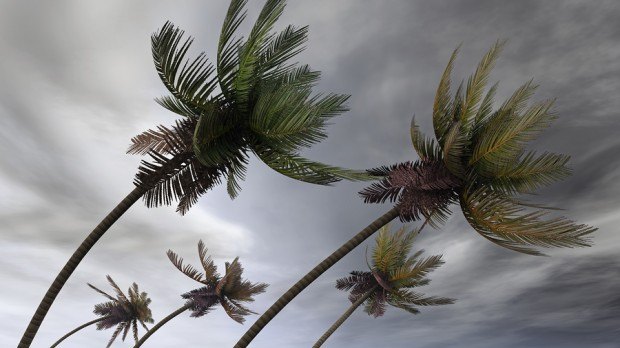Gordon was rapidly weakening to a tropical depression after coming ashore near the Alabama-Mississippi border late Tuesday and killing at least one person while knocking out power to thousands.
The storm, with top winds of 35 miles (56 kilometers) per hour, was swirling toward the northwest, the U.S. National Hurricane Center said in an advisory at 8 a.m., New York time. The storm is forecast to cross Arkansas and move into the Midwest where it will fall apart later this week. A child was killed in Pensacola, Florida, as winds blew a tree onto a mobile home, the Associated Press reported.
While the storm threatens to cause flooding and rains along the coasts of Mississippi and Alabama this week, the potential damage may be limited. Fewer than 45,000 customers were without power, according to a Bloomberg survey of utilities. Gordon earlier prompted officials to declare a state of emergency in Louisiana and triggered evacuations from offshore oil and gas rigs.
“Heavy rain is the main issue,” said Jeff Masters, co-founder of Weather Underground, in Ann Arbor, Michigan. “There will be heavy rainfall, flash flooding for the next few days along the trajectory of the storm.”
As Gordon moved through the Gulf of Mexico Monday and Tuesday, it shut in about 9 percent of both oil and natural gas production. It also forced the evacuation of 54 production platforms or about 8 percent of the 687 in the region, according to the Bureau of Safety and Environmental Enforcement.
The region produces about 5 percent of U.S. natural gas and 17 percent of crude oil, according to the Energy Information Administration. In addition, onshore facilities account for about 45 percent of U.S. refining capacity and 51 percent of its gas processing.
Forecasters are now watching Hurricane Florence, which is currently in the middle of the Atlantic but may come close to the U.S. East Coast next week. In the Pacific, Hurricane Olivia may also get near Hawaii.
In related news: New Orleans declared a state of emergency on Monday. City offices closed Tuesday and Wednesday. All coastal watches and warnings were discontinued, following earlier hurricane and storm surge warnings along the Gulf Coast. The storm may dump as much as 8 inches (20 centimeters) of rain across the western Florida Panhandle and parts of Alabama, Mississippi, Louisiana, Arkansas, Missouri, Iowa and Illinois in the next few days. As much as a foot of rainfall and flash flooding is possible in some areas, the National Hurricane Center said.





















 What to Expect in 2026: U.S. P/C Results More Like 2024
What to Expect in 2026: U.S. P/C Results More Like 2024  California Workers Comp Combined Ratio for 2024 Highest in 20-Plus Years
California Workers Comp Combined Ratio for 2024 Highest in 20-Plus Years  Why the Middle Market Matters and How Insurers Can Capture It
Why the Middle Market Matters and How Insurers Can Capture It  Breaking: Andersen to Replace Zaffino as CEO of AIG on June 1
Breaking: Andersen to Replace Zaffino as CEO of AIG on June 1 







